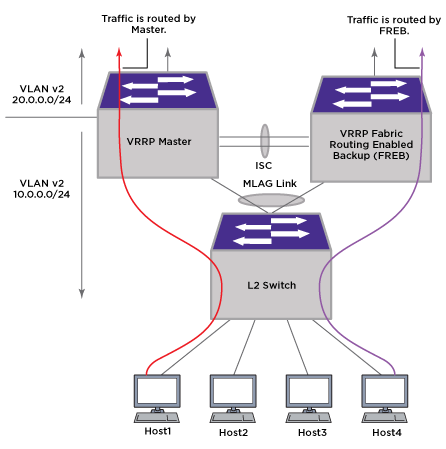Only the master serves as protocol servers like NTP, telnet, SSH, etc and accepts connections destined to the virtual IP. By doing so, hosts always connect to the same virtual router (VR) by using the virtual IP, at any given point of time. This ensures that the host is getting a consistent response from the protocol server. This arrangement allows the host to reach the NTP server using the same IP i.e. virtual IP, even if VRRP mastership moves to a different router. A network monitoring tool is another example, which can use virtual IP to collect data about VRRP domain, by connecting to current VRRP Master. It is not recommended to change the configurations of the switch, when a management session is connected using virtual IP. When VRRP FREB router sits in between the host and VRRP Master router, FREB router does hardware forwarding of these packets from host towards VRRP Master, at Layer 3.


Note
A caveat is that TTL/hop count is decremented for the packets destined for virtual IP, when forwarded by FREB. This may be a problem to run any protocol that expects TTL not to be decremented, between host and Master.Hosts can generate unicast ARP to validate a ARP cache entry. Similarly, unicast Neighbor Solicitation is generated to perform Neighbor Unreachability Detection for a neighbor. These requests are periodic. The unicast ARP/NS requests will be responded by FREB, if it receives the request. A downside of allowing VRRP Master to respond these requests is that it may take considerable CPU cycles when large numbers of hosts are present in VRRP domain.

 Print
this page
Print
this page Email this topic
Email this topic Feedback
Feedback